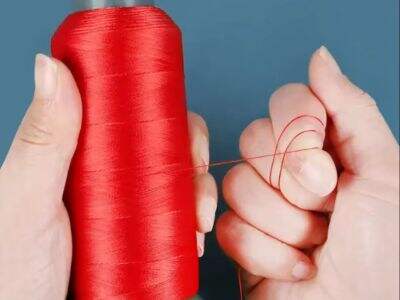Are you curious about polyester and nylon threads? Have you ever considered which is stronger or longer-lasting? This paper is about the strength of polyester and nylon threads when used in our daily life and for hard sewing purposes. Here is what you need to know about these 2 types of threads.
Polyester vs Nylon Thread: What You Should Know
Both polyester and nylon threads are used for sewing, but they differ in some respects. Polyester threads are crafted from strong substances, so they don't break easily, nor do they stretch or shrink. In addition, they hold their color well—they do not fade in sunlight or when washed.
While nylon threads are composed of specific materials, they chemically function differently. They have stretch and smooth, great for sewing stretchy and spandex fabric. Nylon threads have better rubbing and wear resistance than polyester ones, so they're not damaged easily.
Evaluating the Practical Performance of Polyester and Nylon Threads
Both polyester and nylon threads typically serve well for most everyday sewing projects. So again, polyester threads are seen as stronger than the nylon Thread. This is because polyester threads are less likely to break or fray, which makes them great for stitches that need to last a long time.
Nylon lines can be weaker in certain cases. For example, nylon, when you heat it up, can stretch because the threads are just sticking together. This can weaken the stitches so they come apart and make holes in the fabric.
In Tough Sewing Projects, Which Thread Will Hold Up Better?
When we take on such heavy sewing projects such as quilting, making furniture and repairing heavy jackets and pants, we need to select the correct form of Thread. Polyester threads are typically a better choice for these instances; polyester fibers are more robust and have a sturdier shape. Polyester threads can withstand heavy use and keep seams strong over time.
Nylon threads are also strong, but not suited for rough projects. They also can stretch too much and may not be as stable as polyester Thread. This can result in stitches that are more prone to unraveling when stressed out.
Choosing the Right Thread for Long-Lasting Seams
Selecting the appropriate string is important for making joints that keep going great. For strong seams, use polyester threads. They withstand washing, ironing and being worn, without distorting or losing color.
For projects that require stretch and movement, nylon threads are superior. These are awesome for sewing stretchy materials. But if you want a seam that will stand up over time, polyester threads are the way to go.
Good and Bad Points of Polyester and Nylon Threads
Overall polyester thread is good, but has its bad points, and nylon thread is good but has its bad points. Poly threads are strong, colorfast, and long-lasting. These qualities make them the perfect fabric for many sew projects. Nylon threads are prized for their stretching, smoothness, and durability, which makes them great for stretchy fabrics.
When choosing between polyester and nylon threads, consider what your sewing project needs. If strength and durability are key, polyester threads may work best. Nylon threads are a good option if you need flexibility. So in the end, it all comes down to: what do you need for your project?

 EN
EN
 AR
AR
 BG
BG
 HR
HR
 CS
CS
 DA
DA
 NL
NL
 FI
FI
 FR
FR
 DE
DE
 EL
EL
 HI
HI
 IT
IT
 JA
JA
 KO
KO
 NO
NO
 PL
PL
 PT
PT
 RO
RO
 ES
ES
 SV
SV
 CA
CA
 TL
TL
 ID
ID
 LV
LV
 LT
LT
 SR
SR
 VI
VI
 SQ
SQ
 HU
HU
 MT
MT
 TH
TH
 TR
TR
 MS
MS
 GA
GA
 LO
LO
 LA
LA
 BN
BN
 SK
SK
 SL
SL

